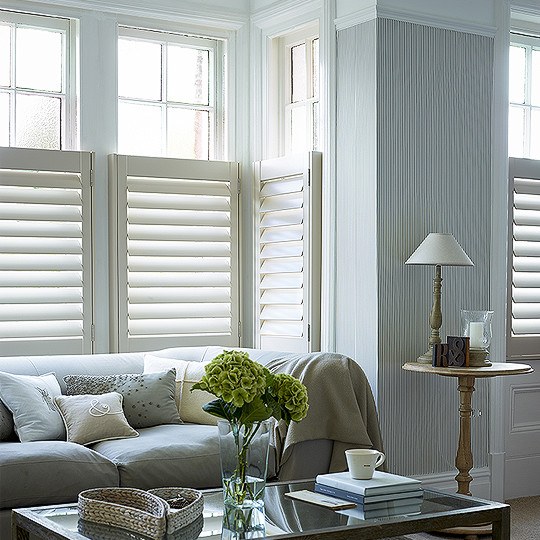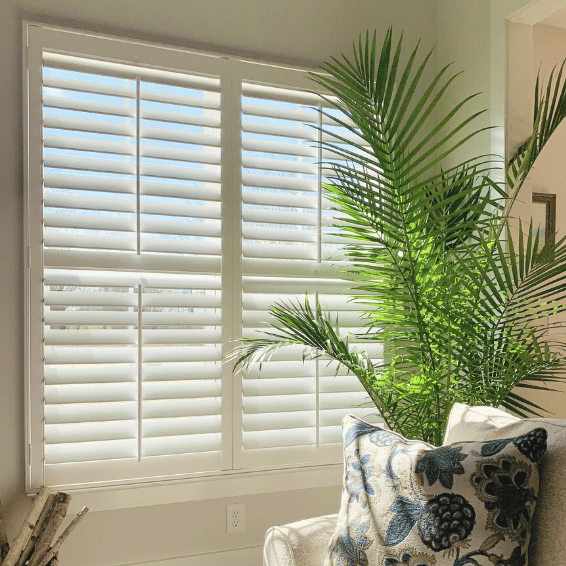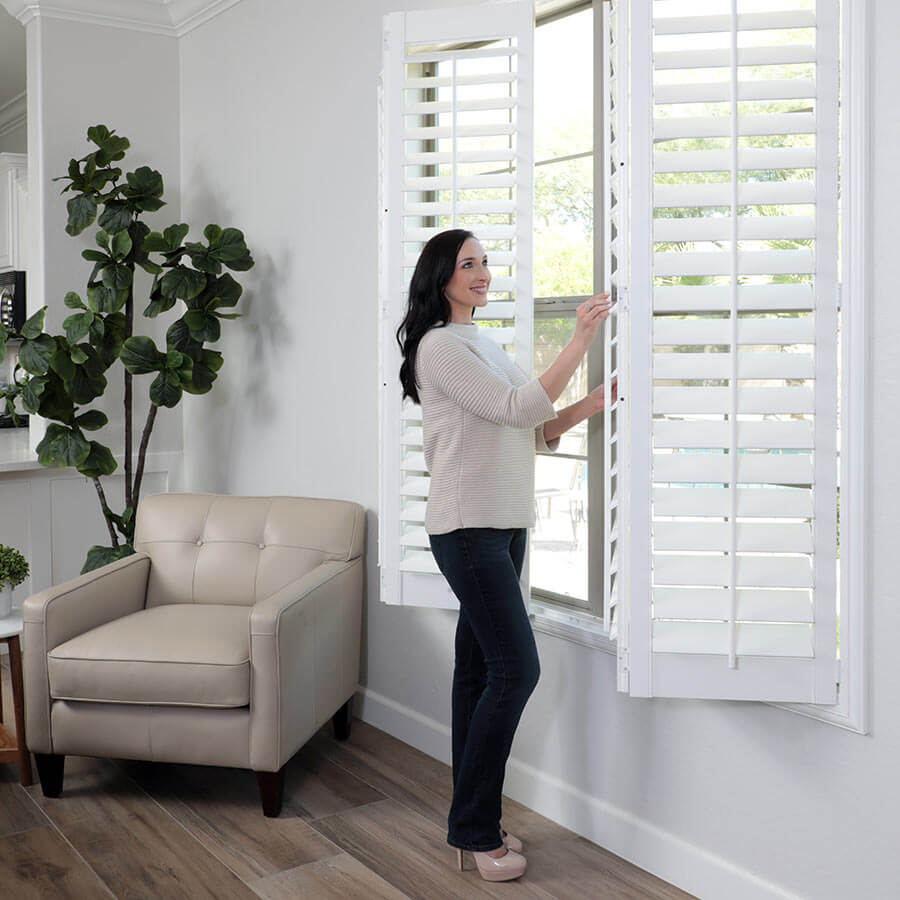Motorized Blinds Phoenix: High-Tech Solutions for Your Home
Motorized Blinds Phoenix: High-Tech Solutions for Your Home
Blog Article
What to Consider When Choosing Between Blinds and Shutters for Your Windows: A Comprehensive Evaluation of Each Choice's Advantages
Choosing the right home window treatment is a decision that goes beyond mere visual appeals; it incorporates capability, maintenance, and lasting investment. Blinds present a cost-effective and adaptable service, while shutters supply unmatched toughness and style.
Secret Differences In Between Blinds and Shutters
Regularly, homeowners locate themselves deliberating in between blinds and shutters when choosing home window treatments. Recognizing the essential distinctions between these two alternatives can substantially affect their decision-making process.
Blinds are usually made from materials such as wood, faux timber, light weight aluminum, or plastic. They include upright or horizontal slats that can be changed to manage light and privacy. The flexibility of blinds enables a variety of dimensions, colors, and designs, making them appropriate for various area appearances. In addition, blinds are commonly extra economical, appealing to budget-conscious homeowners.
In comparison, shutters are strong window coverings that can be custom-fitted to the window structure. Shutters provide better insulation and can improve the general power performance of a home.

Advantages of Blinds
Blinds supply a functional and practical solution for homeowners seeking effective home window therapies. Among the key advantages of blinds is their flexibility to different designs and preferences. Offered in various materials such as wood, faux timber, light weight aluminum, and textile, they can match any type of interior design scheme. In addition, their wide variety of shades and structures permits for modification to match existing decoration.
Another substantial benefit of blinds is their ease of procedure. Lots of modern blinds featured easy to use mechanisms, consisting of cordless alternatives and motorized systems, making them available for any ages. This convenience is boosted by their capability to provide exact light control, allowing home owners to quickly adjust the degree of sunshine going into an area.
Blinds likewise offer exceptional privacy alternatives, as they can be completely opened, partially tilted, or totally shut, depending upon the wanted level of privacy. They are usually extra affordable than shutters, supplying a budget-friendly service without compromising design or functionality. Finally, upkeep is uncomplicated, as many blinds can be cleaned up with a straightforward wipe-down, ensuring that they stay an appealing attribute in any home for years to find.
Benefits of Shutters
Shutters present a distinct set of advantages that make them an appealing option for house owners seeking fashionable and sturdy home window therapies. Among the key advantages of shutters is their phenomenal resilience - window shades phoenix. Created from durable products such as wood, vinyl, or composite, they are developed to endure the test of time and resist damages from UV rays, dampness, and temperature level changes

Shutters window shades phoenix also supply boosted privacy and light control. Homeowners can conveniently change the slats to achieve the wanted level of illumination while preserving privacy from the exterior. Unlike blinds, which may flex or sag over time, shutters maintain their shape and capability.
Additionally, shutters can enhance the worth of a residential property (window treatments phoenix). Their classic aesthetic and durability allure to potential purchasers, making them a worthwhile financial investment. In summary, the toughness, energy effectiveness, privacy control, and capacity for raised residential property value make shutters a compelling alternative for window treatments
Visual Considerations
When choosing home window therapies, aesthetic factors to consider play a crucial role in improving the total design and atmosphere of a room. Both blinds and shutters use distinctive visual attributes that can enhance various interior styles, from modern-day to traditional.
Blinds usually supply a streamlined, minimalist look, easily offered in an array of colors and materials. This flexibility enables property owners to work with blinds with existing design, producing a unified look. Their straight or upright slats can include a modern side, making them ideal for city setups.
On the other hand, shutters exude a anonymous classic elegance that enhances rustic and conventional interiors. Their solid framework and personalized coatings, such as timber discolorations or painted choices, evoke a sense of timelessness. Shutters can act as a declaration item, attracting interest to the window while using a high end aesthetic.
Eventually, the choice between shutters and blinds need to show not only personal design yet likewise the preferred atmosphere of the room. By carefully taking into consideration exactly how each choice aligns with the total layout vision, house owners can successfully enhance hop over to here their room's aesthetic appeal, making certain an unified and inviting setting.
Expense and Maintenance Variables
Expense and maintenance are critical facets to think about when choosing in between blinds and shutters for window therapies. Blinds are usually much more budget-friendly, with a wide variety of alternatives offered at numerous cost factors. Fundamental fabric or vinyl blinds can be fairly budget friendly, while premium products like wood can raise the cost. Setup is typically simple, often permitting do it yourself approaches, which might further decrease expenditures.
In comparison, shutters tend to bring a greater first price due to their custom-made production and durable construction. However, this investment might produce lasting financial savings, as shutters are frequently much more long lasting and call for much less frequent replacement. They also offer superior insulation, potentially lowering energy bills over time.
Maintenance plays a considerable function in the overall cost of window therapies. Blinds usually require normal cleaning and periodic cleaning, while shutters can be cleaned down with a moist fabric for cleaning, making them simpler to maintain. Additionally, shutters are much less at risk to harm from UV rays and wetness, contributing to their longevity. Ultimately, the selection in between blinds and shutters should stabilize both first financial investment and continuous maintenance requires to make sure a satisfying return on financial investment.
Conclusion

Blinds offer a affordable and versatile option, while shutters use exceptional toughness and design.Expense and upkeep are important elements to think about when selecting between blinds and shutters for window treatments. Blinds typically require regular cleaning and periodic cleaning, while shutters can be cleaned down with a moist fabric for cleaning, making them easier to maintain. Inevitably, the selection in between blinds and shutters ought to balance both initial financial investment and recurring maintenance needs to ensure a satisfactory return on financial investment.
In recap, the decision between shutters and blinds pivots on different factors, consisting of product composition, design adaptability, and cost.
Report this page